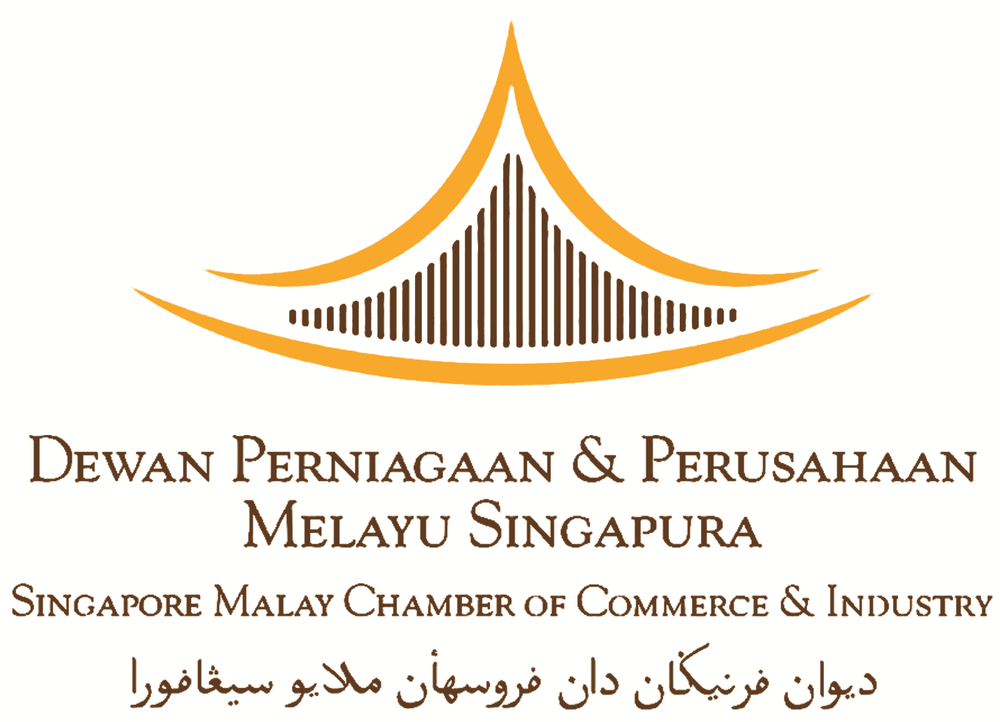- Real CBS Makeovers: 3 Case Studies of SME Owners Who Turned Bad Credit Around
- Ask SmartLend: Why Did My SME Loan Get Rejected?
- Introducing SmartLend Concierge: A Helping Hand for SME Loans
- Legal Ways to Lighten Your Company’s Tax Burden in Singapore
- A Wake-Up Call on Director Duties: The Envy Saga and Other Cautionary Tales in Singapore
- Surviving Cash Flow Crunch: How SMEs Can Use Short-Term Financing Wisely
- Unmasking Business Loan Fraud: How Syndicates and Rogue Brokers Game Singapore’s Lending System—and How AI Can Stop Them
- From Rejection to $60K Approval in 3 Days: How a Fishing Pond Business Got Funded Despite a Flawed Credit Report
- Lender Spotlight: How Poss Capital and SmartLend Partnered For Singapore SMEs
- Which Lender is Right for Your Business in 2025? Banks, Money Lenders, or Alternative Finance
What's New: Release Of Tripartite Guidelines For Flexible Work Arrangements In 2024

The article was published on 05 April 2023 and was recently updated on 16 April 2024
Latest Update: New Guidelines Announced April 2024
What's in it for you as you look for a better work-life balance? Here's new mandatory guidelines on Flexible Work Arrangements (FWAs).
Formal Request Process: Starting this 1st December 2024, all employers must have a system in place for employees to formally request FWAs. This could be a web form, an email address, or a designated HR contact. No more awkward conversations – you'll have a clear channel to make your case for a more flexible schedule.
Clear Communication: Employers will be required to respond to FWA requests within two months. They must also provide a reason for rejection, ensuring transparency in the decision-making process.
Reasonable Grounds Only: Bosses can still say no (as this is not legistrative yet), but their reasons need to be backed by sound business logic. Factors like potential cost increases or productivity concerns are fair game. However, the guidelines also outline what will be considered unreasonable grounds for rejection, protecting employees from arbitrary denials.
Check out Types of Flexible Work Arrangements in the article for more on their differences.
Introduction
As a significant number of employees now seek more flexible work arrangements that enable them to better manage their work-life balance, in response to the changing work landscape, the Tripartite Alliance for Fair and Progressive Employment Practices (TAFEP) has provided us with information about the release of new guidelines for flexible work arrangements in 2024.
These guidelines aim to provide a comprehensive framework for employers to adopt flexible work arrangements to help their employees better balance work and personal commitments. In this article, we will explore the new guidelines proposed by the White Paper on flexible work arrangements and fair employment practices. We will delve into the key features of the guidelines and discuss how they will impact the workforce.
With the rise of digital technologies and changing employee preferences, the traditional nine-to-five work model is becoming less relevant. We understand the importance of fair employment practices and flexible work arrangements in today's fast-paced and dynamic work environment. It is our goal to provide our readers with comprehensive information on the latest developments in this area.
This has led to a growing demand for flexible work arrangements, such as remote work, part-time work, job sharing, and reduced working hours with flexible leave policies.
The Proposed Guidelines: What's Included In The White Paper?
The White Paper proposes a set of guidelines to ensure that fair employment practices are implemented in the workplace. These guidelines include the following:
- The requirement to offer flexible work arrangements by employers to their employees
- The promotion of job sharing, telecommuting, and part-time work options
- The introduction of measures to ensure that employees are not discriminated against based on their race, religion, or nationality including gender stereotypes
- The implementation of a fair wage system that provides equal pay for equal work
- The establishment of a platform for employees to raise concerns and reports of discrimination or harassment in workplace
Key Features of the Guidelines
This will perform as a guidance to companies on how employers can implement these arrangements in a fair and equitable manner, and how to ensure that employees are able to achieve a good work-life balance.
Types of Flexible Work Arrangements
Flexi-Place: This arrangement allows employees to work from various locations beyond the typical office setting. Popular options include telecommuting and work-from-home, offering increased flexibility and potentially improved work-life balance.
Flexi-Time: Scheduling takes center stage with Flexi-Time. Employees can choose their work timings within certain parameters, as long as the total required hours and workload are met. This could involve flexi-hours (adjusted start and end times), staggered hours (distributed work hours across the day), flexi-shifts (rotating shifts), or compressed work schedules (full-time hours completed in fewer days).
Flexi-Load: This option focuses on workload adjustments, with corresponding changes in compensation. Part-time work and job sharing are prime examples. Part-time employees typically work less than the standard full-time hours, while job sharing involves two individuals splitting the responsibilities (and hours) of one full-time position.
Benefits of Flexible Work Arrangements
Flexible work arrangements have a range of benefits for both employers and employees.
For employers, flexible work arrangements can help to increase productivity, reduce absenteeism, and improve employee retention.
For employees, flexible work arrangements can help to improve work-life balance, reduce stress and burnout, and improve job satisfaction.
Impact on the Workforce
These proposed guidelines will have a significant impact on the workforce. By promoting flexible work arrangements, employees will have more control over their work-life balance, which will improve their well-being and productivity. This will also benefit employers as they will have a more engaged and motivated workforce.
The implementation of fair employment practices will also ensure that employees are treated fairly and equitably. This will create a more harmonious workplace and reduce the risk of disputes and legal action.
In addition, the establishment of a platform for employees to raise concerns will provide them with a voice and increase transparency in the workplace. This will help to build trust between employees and employers and create a positive work environment.
“Flexible work arrangements will become a norm in our future workplaces, and this enables more women, especially those with caregiving responsibilities, to remain or to return to work. Offering such arrangements allows employers to tap on a larger pool of talent such as seniors."
As quoted from Minister of State for Manpower, Gan Siow Huang on Singapore Women’s Development on Monday (Mar 28).
Implementation of Flexible Work Arrangements
Communication with employees
Effective communication with employees is critical to the successful implementation of flexible work arrangements. It is essential to keep employees informed of policies and expectations, and to ensure they understand how their roles will be impacted. Methods for communicating with employees can include email, meetings, and internal messaging systems. It is important to involve employees in the process and gather feedback to ensure that their concerns and needs are being addressed.
Some tips for effective communication with employees include:
- Be clear and concise when communicating policies and expectations
- Be open and transparent about the reasons for implementing flexible work arrangements
- Encourage employees to ask questions and provide feedback
- Provide ongoing communication to keep employees informed of any changes or updates
Training for managers and employees
Training for managers and employees is essential to ensure that they understand the benefits of flexible work arrangements and how to implement them effectively. There are a suite of programmes and grants ,made available for employees in Singapore. However, the new guidelines can include more:
- Explanation of the benefits of flexible work arrangements, such as increased productivity, improved work-life balance, and cost savings for businesses
- Training on how to manage a remote or flexible workforce, including how to monitor performance and provide feedback
- Training on how to use technology to support flexible work arrangements, such as video conferencing and collaboration tools
Check out more about the programmes and grants offered to workforce Singapore on our website here.
Monitoring and measuring success
Monitoring and measuring the success of flexible work arrangements is critical to ensure that they are meeting their intended goals. This can include:
- Tracking employee productivity and performance
- Gathering feedback from employees on their work-life harmony and job satisfaction
- Monitoring the use of technology to support flexible work arrangements
- Regular review of policies and procedures to ensure they are meeting their intended goals
Adapting policies as needed
Flexibility is a key aspect of flexible work arrangements, and policies and procedures may need to be adapted over time to ensure their continued success. It is important to regularly review and update policies and procedures as needed, based on feedback from employees and changes in the business environment.
Legal Requirements for Flexible Work Arrangements
Implementing flexible work arrangements involves not only understanding the benefits and risks but also the legal requirements. The Singapore government has laws in place to protect the rights and interests of both employees and employers. It is crucial for financial SMEs and young entrepreneurs to comply with these regulations to avoid legal issues that could damage their businesses' reputation and incur financial losses. In this section, we will discuss the legal requirements for implementing flexible work arrangements in Singapore.
Explanation of the Employment Act and related regulations
The Employment Act (EA) is a legislation enacted to protect employees in Singapore. It outlines the basic terms and conditions of employment, including working hours, leave entitlements, and overtime pay. The EA also covers work-related issues such as termination and retrenchment, and sets out the dispute resolution process.
Apart from the EA, employers also need to adhere to other regulations, such as the Personal Data Protection Act, which governs the use and protection of personal data. Additionally, the Work Injury Compensation Act requires employers to provide compensation to employees who suffer work-related injuries.
Guidance on compliance with legal requirements
Employers should ensure that their flexible work arrangements comply with the legal requirements set out in the EA and related regulations. Some guidelines to follow include:
- Ensure that flexible work arrangements do not violate the terms and conditions set out in the EA, such as working hours and overtime pay.
- Protect employees' personal data and ensure compliance with the Personal Data Protection Act.
- Provide a safe working environment, whether employees are working in the office or remotely.
- Ensure that the terms of the employment contract, including flexible work arrangements, are clearly stated and agreed upon by both parties.
Of course, employers who fail to comply with the legal requirements for flexible work arrangements may face penalties and legal consequences.
Conclusion
Flexible work arrangements have become increasingly popular in recent years, especially with the COVID-19 pandemic forcing businesses to adapt to remote work. In this blog, we have discussed the benefits of flexible work arrangements, the tripartite guidelines for implementing them in Singapore, and the legal requirements that financial SMEs and young entrepreneurs need to comply with.
Flexible work arrangements offer numerous benefits to both employees and employers. They can help improve work-life balance, reduce stress and burnout, increase productivity, and attract and retain talent. Employers can also save on office space and overhead costs, increase job satisfaction, and improve employee engagement.
The release of the Tripartite Guidelines for Flexible Work Arrangements in 2024 is significant for financial SMEs and young entrepreneurs in Singapore. These guidelines provide a framework for businesses to implement flexible work arrangements while ensuring compliance with legal requirements and maintaining productivity and efficiency. By following these guidelines, businesses can create a positive and productive work environment that fosters growth and innovation.
In conclusion, financial SMEs and young entrepreneurs in Singapore should embrace flexible work arrangements as a means to boost business growth:
- By offering flexibility and work-life balance to employees, businesses can attract and retain talent, increase productivity, and reduce overhead costs.
- By following the tripartite guidelines and complying with legal requirements, businesses can create a positive work environment that promotes innovation and growth. It is time to embrace the benefits of flexible work arrangements and adapt to the changing demands of the modern workforce.
At the end of the day, we believe that the welfare of our employees is of the utmost importance. We hope that these guidelines will pave the way for a better future for the workforce and help us to create a workplace norm that is truly inclusive and supportive.
Read also: Employing Workers with Special Needs in Singapore - What Other Grants Support Is There? [Updated]
Read also: Singapore's First Career Conversion Programme For FinTech Talents
Read also: All You Need To Know About Employee Training Grants In Singapore
-------------------------------------------------------------------------------------------------------
Got a Question?
WhatsApp Us, Our Friendly Team will get back to you asap :)
Share with us your thoughts by leaving a comment below!
Stay updated with the latest business news and help one another become Smarter Towkays. Subscribe to our Newsletter now!










_940.png)





